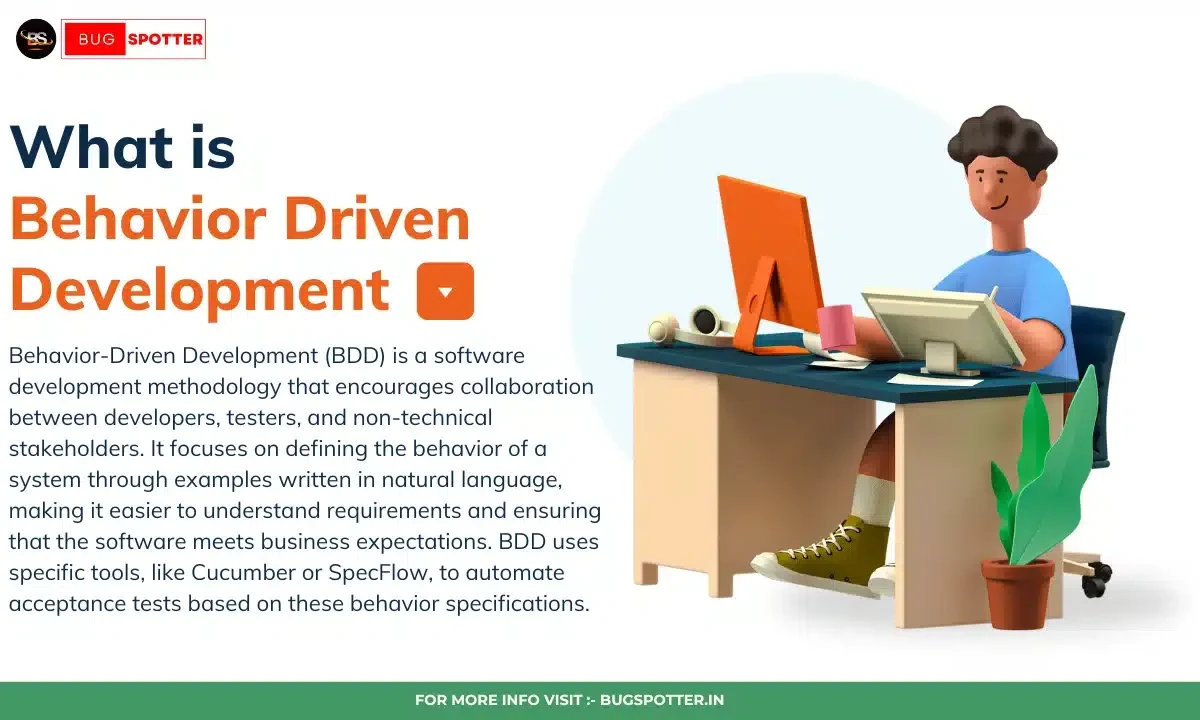What is Behavior Driven Development ?

Introduction
In the fast-paced world of software development, ensuring that new features, bug fixes, or improvements are deployed smoothly and without disrupting the user experience is crucial. Traditionally, deployment processes were heavily driven by developers, with minimal interaction from stakeholders or end users. However, with the advent of Behavior-Driven Development (BDD), a more collaborative, test-driven approach has emerged to revolutionize how software is deployed in production environments.
What is Behavior Driven Development (BDD)?
Behavior-Driven Development is a software development methodology that evolved from Test-Driven Development (TDD). While TDD focuses on writing tests before the code to ensure functionality, BDD takes it a step further by promoting the use of human-readable, business-centric scenarios to define the behavior of a system.
BDD encourages collaboration between developers, testers, and business stakeholders (e.g., product owners, clients). The idea is to describe the software’s behavior using simple, understandable language, ensuring everyone involved in the project is on the same page.
Key Principles of BDD:
Collaboration: BDD fosters collaboration between technical and non-technical team members, allowing stakeholders to actively contribute to the software’s requirements and specifications.
Ubiquitous Language: In BDD, a shared language is used across all stakeholders. The goal is to bridge the gap between technical jargon and business understanding. This shared language is often referred to as “Gherkin” syntax, a simple format to express the system’s behavior.
Behavior-Focused: The focus is on how the system should behave from the user’s perspective. Instead of writing tests for individual functions or components, BDD describes the desired behavior of the system in real-world scenarios.
Living Documentation: BDD scenarios are written in a way that they can double as documentation. This documentation is continuously updated and evolves alongside the application, providing an up-to-date view of the software’s functionality.
How Does BDD Work?
BDD uses specifications that are written as user stories or scenarios to describe how the application should behave. These scenarios are typically written in the “Given-When-Then” format:
- Given: Describes the initial context or setup.
- When: Defines the action or event that triggers a behavior.
- Then: Describes the expected outcome or result of the action.
Example Scenario: Let’s say we’re working on an online banking application, and we need to define a scenario for transferring funds between two accounts. Here’s how we might write it using BDD syntax:
Feature: Fund Transfer
Scenario: Successfully transferring funds between two accounts
Given I have a checking account with a balance of $1000
And I have a savings account with a balance of $500
When I transfer $200 from my checking account to my savings account
Then my checking account balance should be $800
And my savings account balance should be $700
This simple, human-readable description is clear to both technical and non-technical team members. Developers and testers can use it to guide implementation and verify correctness.
Tools for BDD:
There are several tools designed to facilitate BDD implementation, and they typically integrate with common programming languages:
Cucumber: One of the most popular tools in the BDD space. It allows teams to write scenarios in Gherkin syntax and then implement those steps in code using various programming languages like Java, Ruby, and JavaScript.
SpecFlow: A .NET-based BDD framework that integrates with Visual Studio. It’s similar to Cucumber but tailored for C# developers.
Behat: A BDD framework for PHP, it allows you to write human-readable tests for web applications.
JBehave: A framework for Java that also supports the Gherkin syntax for writing BDD-style tests.
These tools allow you to automate the execution of your behavior-driven scenarios, ensuring that the software behaves as expected and enabling continuous testing.
Benefits of BDD:
Improved Collaboration: By using a common language and writing scenarios that everyone can understand, BDD brings stakeholders from various domains (development, testing, business) together, leading to better communication and more accurate software requirements.
Clarity and Shared Understanding: Scenarios written in natural language reduce the ambiguity in software requirements. This ensures that developers understand the intent behind a feature and that the product matches the business’s needs.
Test Automation and Continuous Feedback: BDD encourages writing automated tests based on user behavior. This leads to continuous feedback, ensuring that developers can identify issues early in the development cycle and maintain high code quality.
Living Documentation: Since the BDD scenarios themselves serve as documentation, they stay up-to-date and reflect the system’s current behavior. This reduces the need for manually maintaining separate documentation.
Early Bug Detection: Because BDD focuses on behavior from the start, it allows for earlier detection of bugs or gaps in functionality. The process ensures that the system’s behavior is always aligned with business expectations.
Challenges of BDD:
While BDD offers many benefits, it’s important to be aware of its challenges:
Initial Setup and Learning Curve: Adopting BDD in a team can require an initial investment in learning new tools, writing scenarios, and adopting the new workflow.
Maintaining Clear, Concise Scenarios: Scenarios should remain clear and focused on user behavior. It can be tempting to write overly technical or detailed scenarios, which can lead to confusion and maintenance issues.
Overhead in Writing Scenarios: Writing and maintaining behavior-driven scenarios can add overhead to the development process. Teams need to ensure that the benefits outweigh the costs of creating and maintaining the scenarios.
Latest Posts
- All Posts
- Software Testing
- Uncategorized





Categories
- Artificial Intelligence (5)
- Best IT Training Institute Pune (9)
- Cloud (2)
- Data Analyst (55)
- Data Analyst Pro (15)
- data engineer (18)
- Data Science (104)
- Data Science Pro (20)
- Data Science Questions (6)
- Digital Marketing (4)
- Full Stack Development (7)
- Hiring News (41)
- HR (3)
- Jobs (3)
- News (1)
- Placements (2)
- SAM (4)
- Software Testing (70)
- Software Testing Pro (8)
- Uncategorized (33)
- Update (33)
Tags
- Artificial Intelligence (5)
- Best IT Training Institute Pune (9)
- Cloud (2)
- Data Analyst (55)
- Data Analyst Pro (15)
- data engineer (18)
- Data Science (104)
- Data Science Pro (20)
- Data Science Questions (6)
- Digital Marketing (4)
- Full Stack Development (7)
- Hiring News (41)
- HR (3)
- Jobs (3)
- News (1)
- Placements (2)
- SAM (4)
- Software Testing (70)
- Software Testing Pro (8)
- Uncategorized (33)
- Update (33)





